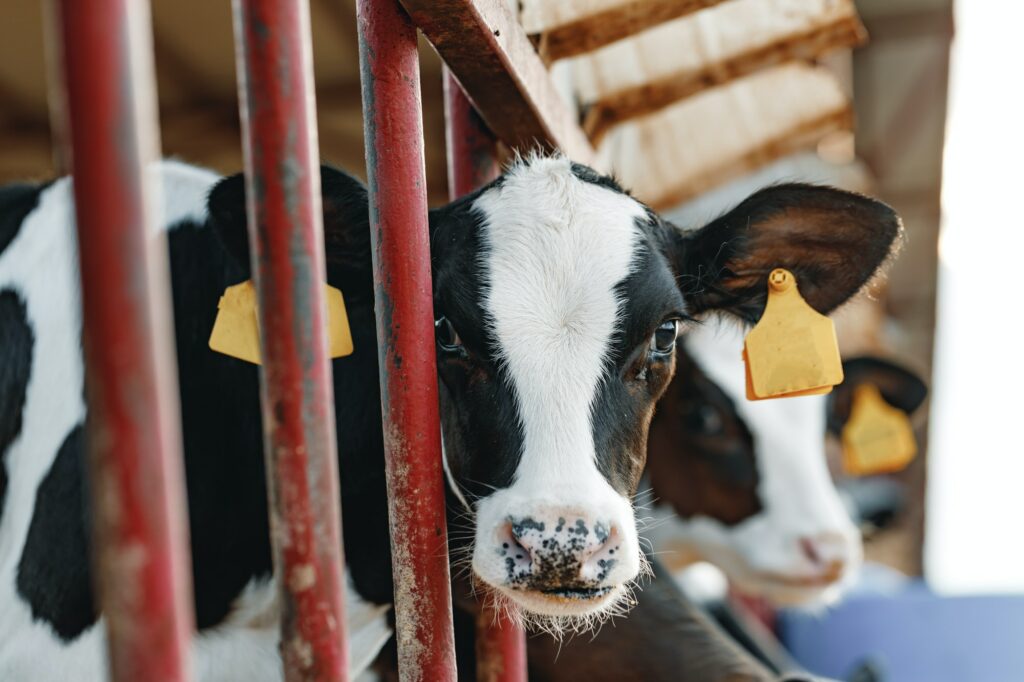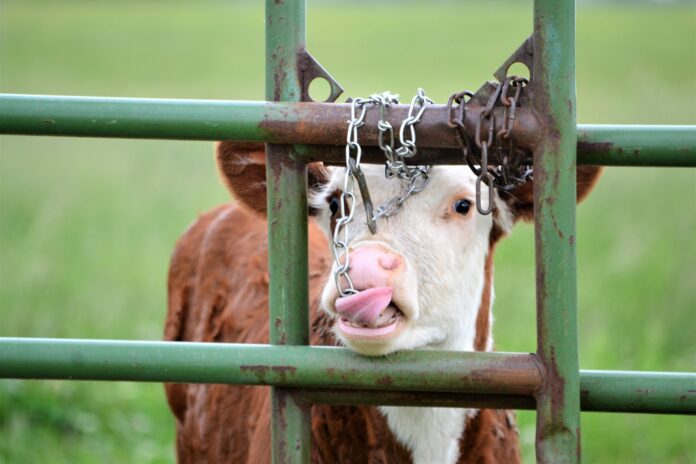A highly valued food item that is frequently featured on the menus of high-end restaurants around the world, veal occupies a controversial place at the center of debates over moral dilemmas and animal welfare issues. Advocates of animal rights are deeply concerned about the processes used in its production and the way calves are treated. As such, it has sparked extensive discussions over the moral ambiguities and ethical ramifications of its intake.
The complex process of raising veal and the care given to the young calves have come under fire in several circles, most notably from ethical people and animal rights activists. The key to the issue is the techniques used in the veal business, specifically the methods for raising calves and using the meat that is later consumed. These actions have drawn harsh condemnation and ignited passionate discussions about the moral obligations that come with using a product of this nature.
Furthermore, the moral controversy surrounding the consumption of veal goes beyond questions of flavour or culinary merit and instead concerns the morality of supporting a business that appears to have little regard for the well-being of its animals. Supporters of these consuming practices fiercely argue that doing so keeps these sentient beings in a state of pain and misery, hence society’s attitudes towards animals ought to be reevaluated.

In many nations, including the United States, Canada, France, Italy, Hungary, and others, veal is the preferred meat. This meat’s flavour and minimal fat content make it popular. Consumers purchase frozen veal chops for use in numerous recipes. Ground veal can be used in a variety of inventive ways to create delicious meals.
Mature dairy beef is tougher to eat than cooked veal stew meat. In addition to roasting, grilling, and stir-frying, stir-frying is another method of cooking ground veal.
What is Veal?
Meat from young calves, mostly from dairy cows, is called veal. The calves, a consequence of the dairy business, are usually male offspring born at dairy farms. Male calves that cannot give milk are frequently considered surplus and are delivered to veal farms. Although the majority of calves transferred to veal pens are killed between 16 and 18 weeks of age, some veal varieties may undergo even more brutal treatment.
Types of veal
Based on the Humane Society Veterinary Medical Association, there are four varieties of veal products:
Bob veal
Made up of young calves that are slaughtered when they are only a few days or weeks old. The maximum life span for these young calves is three weeks, or until they weigh 150 pounds. About 15% of veal available for purchase is referred to as “bob veal.”
Milk-fed veal/ Rose veal
At approximately eighteen weeks of age, veal fed on milk is produced. The low-iron diet of artificial “milk” given to these calves results in anaemia, which affects the quality of the finished meat product.
Red veal
A more sustainable diet consisting of grains, hay, and milk replacer is provided to red veal calves. Their meat is redder and considered less desirable than white veal, but they have a healthier diet and more freedom to move.
Slink veal
Slink veal is produced from unborn calves removed from pregnant cows that have been slaughtered. Both the US and Canada banned it.
How is veal made?

Veal production is a gruelling procedure that begins soon after a calf is born. These calves have a traumatic trip through the veal manufacturing industry after being taken from their mothers within hours or a day of birth. These infants, who are not allowed to suckle, are purposefully malnourished to produce soft meat suitable for human consumption.
These calves, who are transported to veal farms at the age of one day, undergo terrifying rides in packed vehicles before arriving at their final location—the veal farm where they will spend the remainder of their brief lives. These shipments, which frequently cover large distances, expose the calves to harsh conditions, including going without food or water and being exposed to a variety of weather conditions that are harmful to their health.
These veal cattle, debilitated from their ordeal and yet in infancy, face a cruel end when they arrive at the abattoir. They undergo horrifying techniques, such as electric shocks or bolt guns, intended to make them unconscious so that their throats can be cut. Remarkably, in certain cases where the stunning procedure fails, the calves remain awake and conscious even after their throats are sliced.
Veal Production: Ethical Dilemmas
Crates
Newborn calves spend much of their brief lives confined in veal boxes, which are just 0.8 by 1.8 metres in size. These stifling cages are illegal in some US states and Europe, but they continue to be the main source of supply for many veal enterprises that raise the highly sought-after bob veal.
These containers have a sinister purpose: they rob these young animals of their innate tendencies and instincts. Trapped inside the enclosures, young calves live life without mobility, unable to even stand up straight or turn around. They are made to sit among own waste in unhygienic surroundings and survive on a meagre watery diet.
The whole process, meant to guarantee soft and pale meat, ends with young calves being killed in the first few months of their lives to command a higher price on the market. The awful truth that the transient enjoyment of flavor and texture is more important than stopping such horrible misery endures, illuminating the priorities of those working in this field.
Confined space
Calves kept in veal crates lack the room they need for playfulness and natural mobility. Other options, including cramped sheds or cages with wooden slat floors, provide very little comfort or stimulation for these animals, which often results in injuries and immobility.
Veal calves are grown in conditions that rarely allow them to be physically active or exposed to sunshine. These limitations, which ignore the animals’ basic demands for exercise and natural light in favour of maintaining a certain appearance of their meat in order to increase profitability, emphasise the industry’s profit-driven mentality at the expense of the welfare of the animals.
Mental distress
Veal calves experience stress and trauma due to a variety of factors, including isolation, lack of social interaction, natural instincts being suppressed, and separation from their moms. These conditions result in behaviours that are indicative of mental anguish and poor well-being, such as excessive resting, bar biting, and tongue rolling.
Digestive Issues and Anemia
Almost all veal calves have severe anemia, which is purposefully caused by a diet that is deliberately low in iron to keep their meat looking as pale as possible. The intentional iron deficiency is a strategic move to increase the meat’s market value. Furthermore, their food is purposefully deficient in vital nutrients, which worsens intestinal health and frequently causes upsetting diarrhea.
These intentional changes to the animals’ nutrition and the resulting health problems they cause are not coincidental. Rather, they stand for a purposeful and inhumane method of killing that ignores the basic needs of these defenceless animals in favour of a profitable flesh trade.
Veal Calves’ Proneness to Disease
Owing to their underdeveloped immune systems and inadequate care, veal calves are often more vulnerable to illnesses and infections. As a result, veal calves are given an average dosage of antibiotics that is far higher than that of factory-farmed pigs and chickens to combat this vulnerability.
Sadly, some veal calves that are unable to avoid disease or infection even after receiving antibiotics suffer a terrible fate: they are put to death and disposed of as a containment measure. This grim reality highlights the serious health issues that these animals in the veal industry suffer.
Abuse and Aggression
Veal calves have been physically abused by farm workers in a number of documented incidences, including punching, kicking, and violent dragging. These helpless animals are subjected to cruelty just by virtue of their birth into a society that values them only in relation to their death.
The documented cases highlight the appalling treatment these calves receive, bringing to light the disturbing fact that they are subjected to physical abuse and mistreatment by industry workers, underscoring the extreme disregard for their welfare and the structural problems ingrained in the veal industry.
Conclusion
To put it simply, veal is among the most inhumane, disposable, and cruel items that humans have ever produced. The vast majority of people would not imprison, kill, and eat a calf that was born on their property. Instead, the majority would take care of these infants or look for someone who could support them. That being said, it defies all moral consistency to support someone else in taking their life and torturing them in our place.
The moral implications of veal production and eating are still complicated and divisive topics. Even though many people still enjoy veal as a food, the sector is seeing a rise in demand for sustainable and ethical practises. To create a more ethical and compassionate approach to food production, it is imperative to address animal welfare concerns and promote ethical alternatives.


